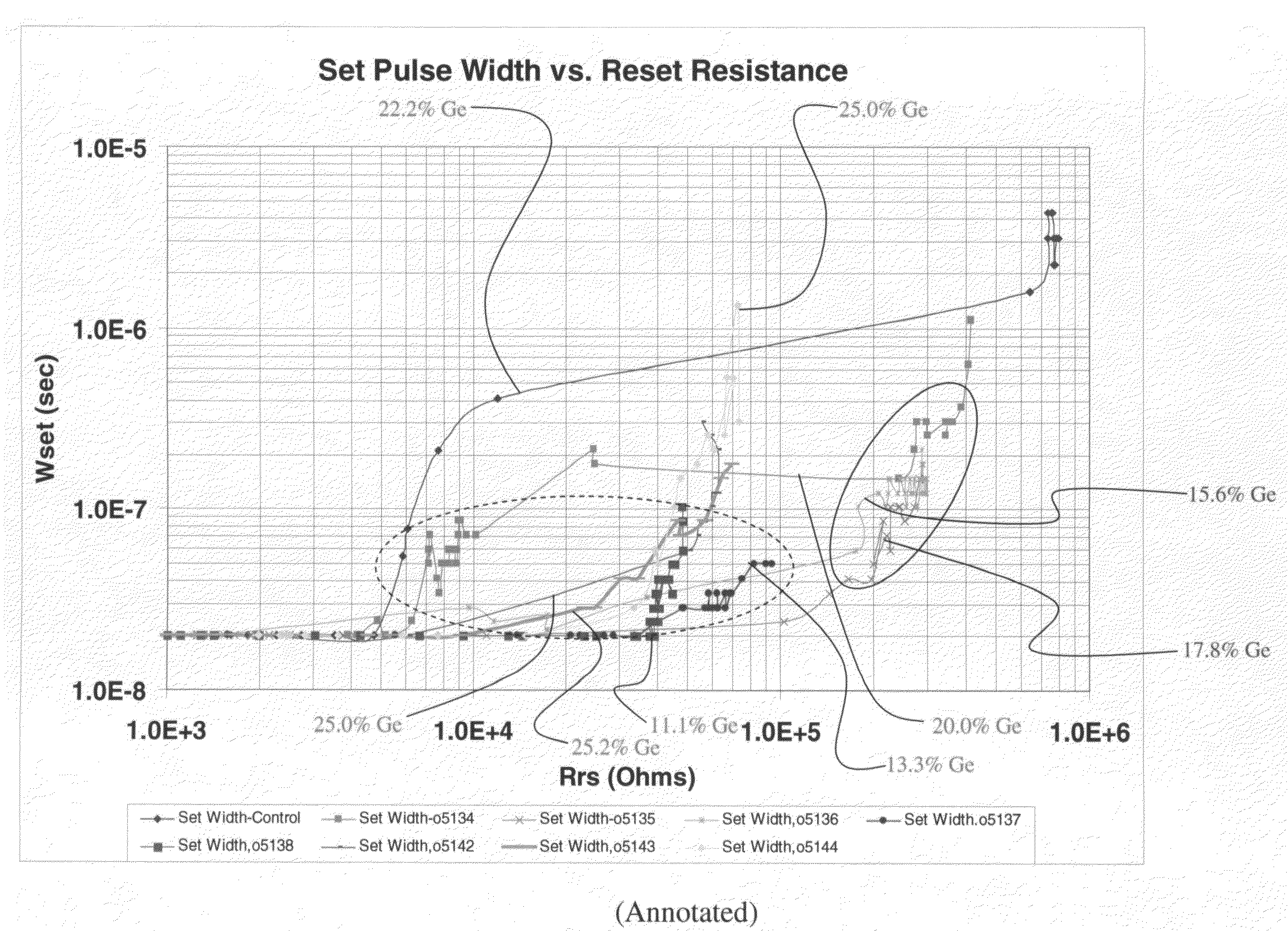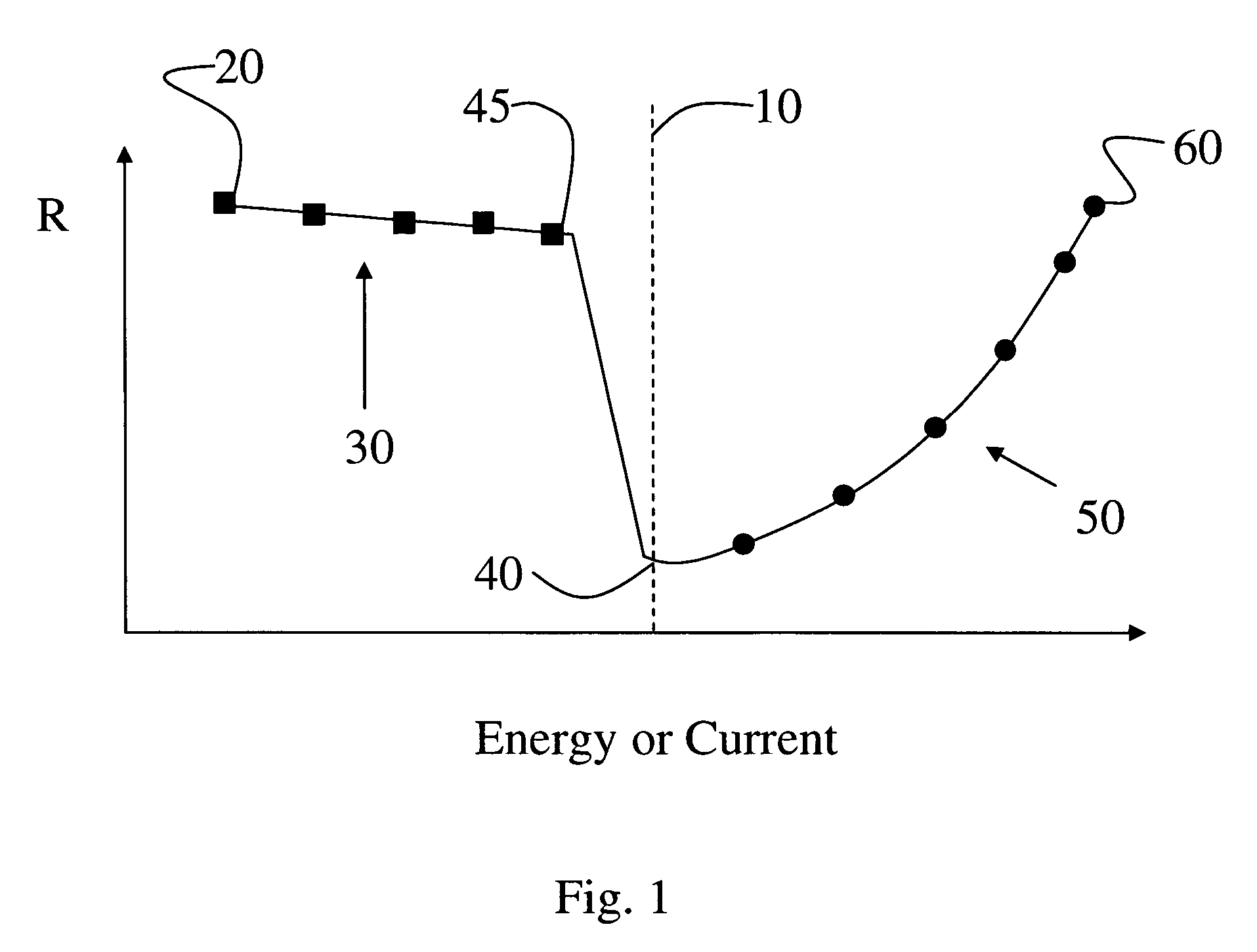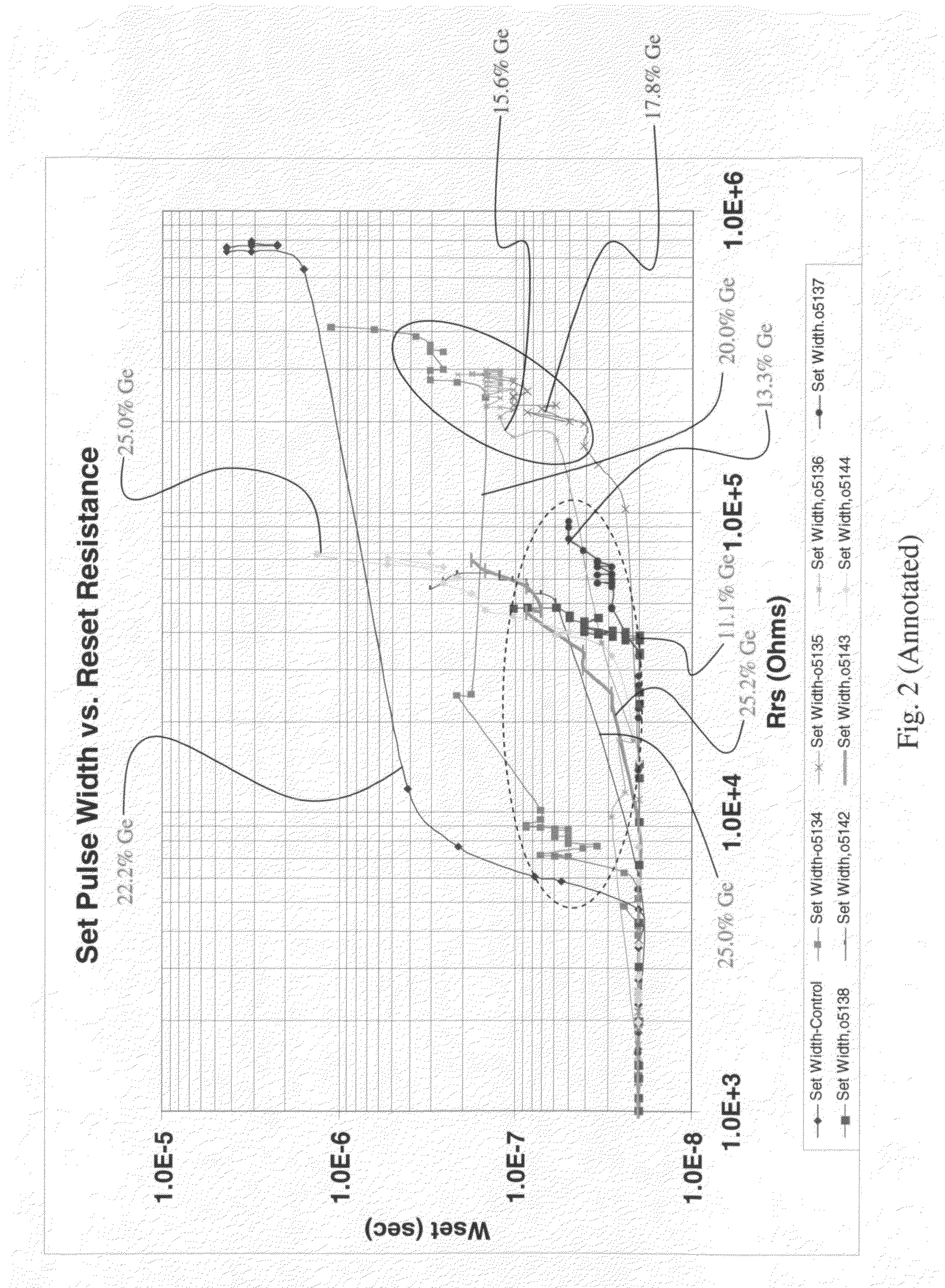Chalcogenide devices and materials having reduced germanium or telluruim content
a technology of germanium telluruim and chalcogenide, which is applied in the direction of bulk negative resistance effect devices, semiconductor devices, electrical appliances, etc., can solve the problems of affecting the thermal stability of materials, and affecting the formation of chalcogenide, etc., to achieve favorable formation characteristics, short crystallization time, and favorable formation characteristics
- Summary
- Abstract
- Description
- Claims
- Application Information
AI Technical Summary
Benefits of technology
Problems solved by technology
Method used
Image
Examples
example 1
[0046]In this example, the fabrication of memory devices having active chalcogenide layers in accordance with the instant invention is described. The device structure is a commonly utilized two-terminal device design having an active chalcogenide layer in a pore geometry in electrical contact with top and bottom electrodes. Two different device configurations were used and similar results were achieved for each. Both designs were deposited on a Si wafer with a thick SiO2 surface oxide layer.
[0047]In one design, a chalcogenide layer having a thickness of 500 Å was deposited on a circular lower electrode of dimension 2 layers. A top electrode was next deposited in situ and included a 400 Å carbon layer deposited on top of the chalcogenide layer and one or more conductive layers deposited on top of the carbon layer. The conductive layers typically included a 300 Å TiN layer and a 500 Å Ti layer.
[0048]In a second design, a 350 Å bottom electrode layer (e.g. titanium aluminum nitride) wa...
example 2
[0052]In this example; the improved crystallization speeds of devices that include chalcogenide materials according to the instant invention are described. The device structures utilized in this example correspond to those described in EXAMPLE 1 hereinabove. The crystallization speeds of devices including several of the chalcogenide compositions listed in EXAMPLE 1 hereinabove were measured. In the measurements, a current pulse was applied to the device to transform the chalcogenide to an initial state in the grayscale portion of the response curve. The resistance of the initial state was recorded. In the next step of the experiment, energy was applied to the device and the time required to set the device was recorded. The applied energy was in the form of a current pulse having a constant amplitude and variable width. The energy of the pulse was such that the device operated in the accumulating response regime of the resistance vs. current plot of the device (see FIG. 1). The resis...
PUM
 Login to View More
Login to View More Abstract
Description
Claims
Application Information
 Login to View More
Login to View More - R&D
- Intellectual Property
- Life Sciences
- Materials
- Tech Scout
- Unparalleled Data Quality
- Higher Quality Content
- 60% Fewer Hallucinations
Browse by: Latest US Patents, China's latest patents, Technical Efficacy Thesaurus, Application Domain, Technology Topic, Popular Technical Reports.
© 2025 PatSnap. All rights reserved.Legal|Privacy policy|Modern Slavery Act Transparency Statement|Sitemap|About US| Contact US: help@patsnap.com



